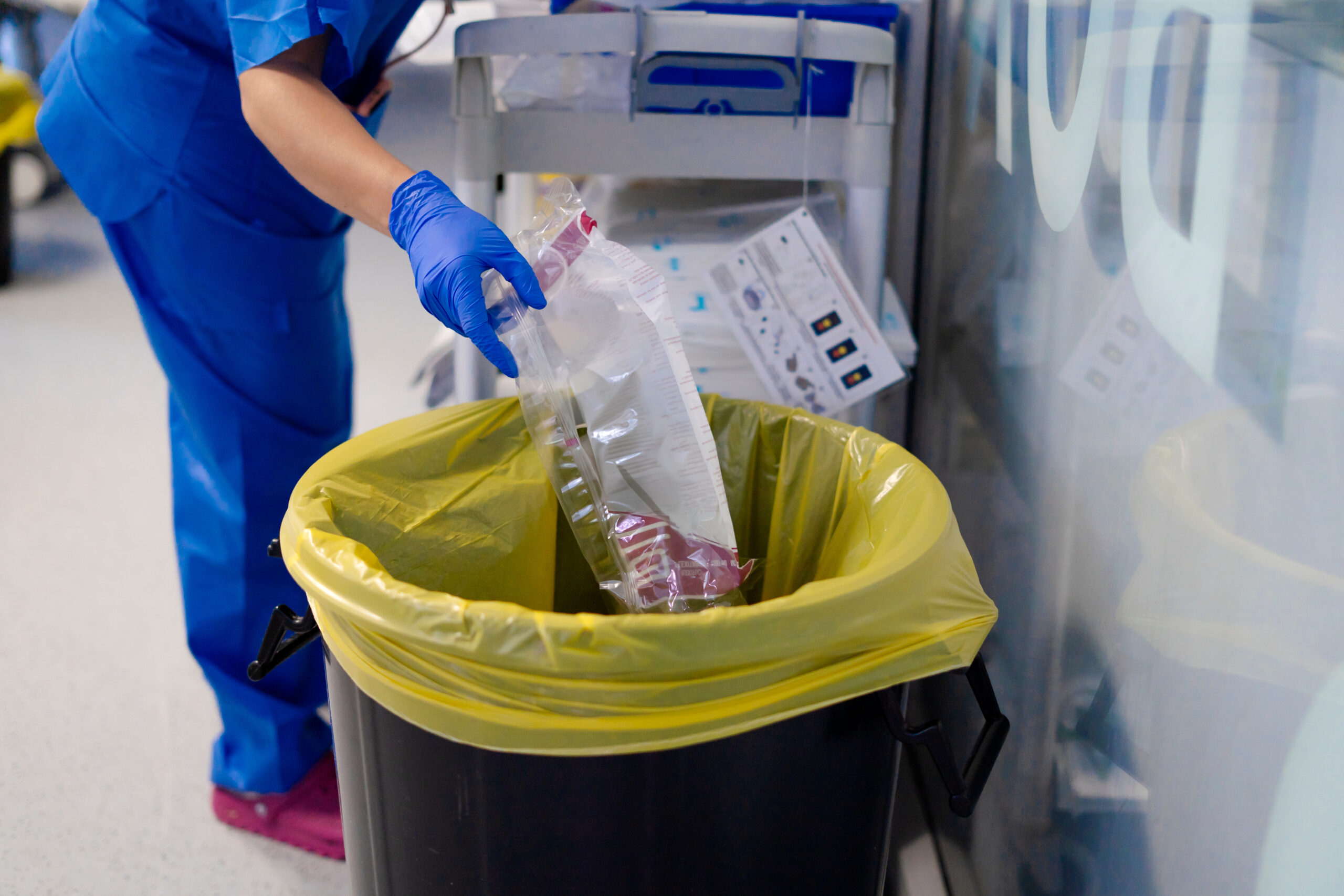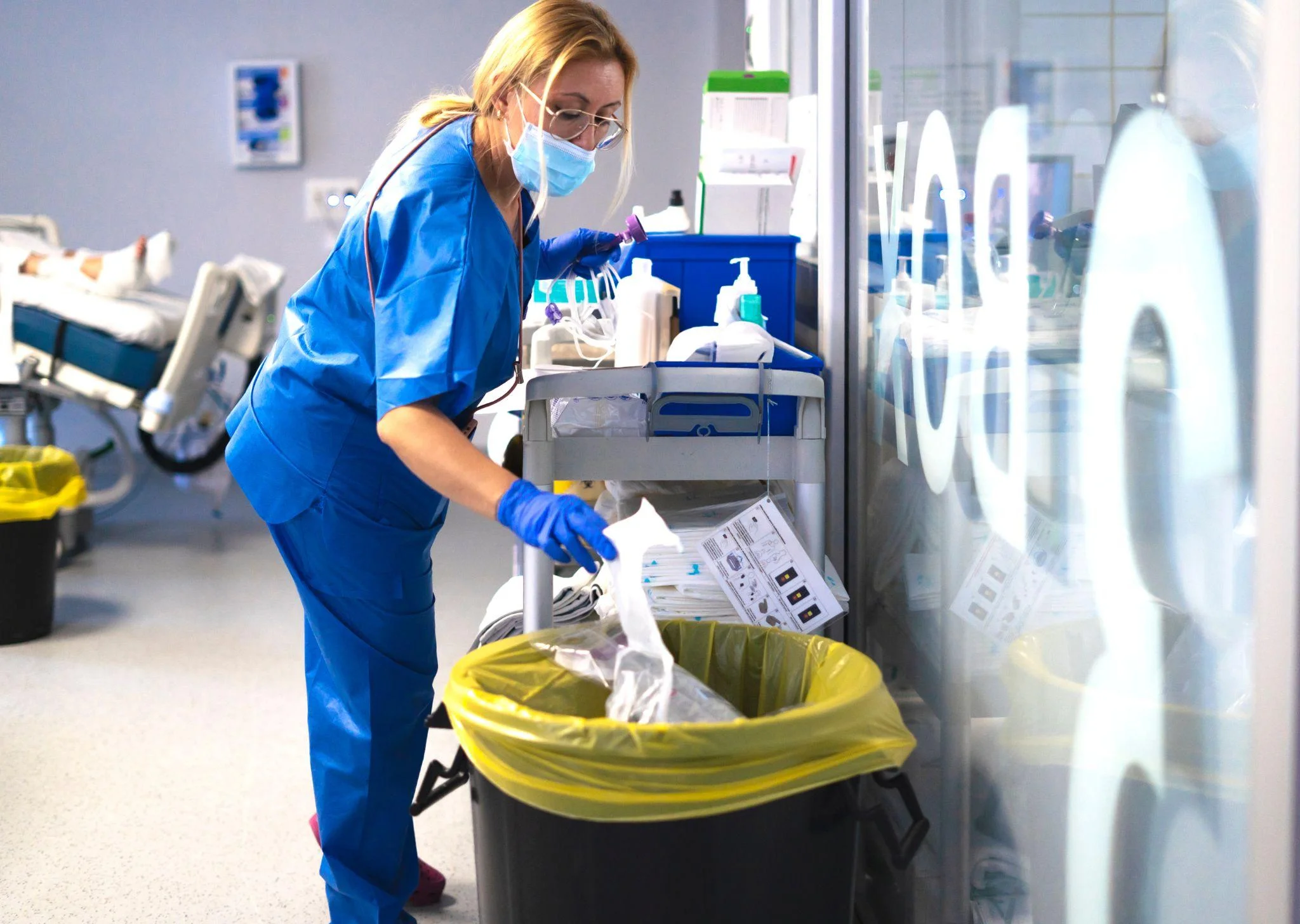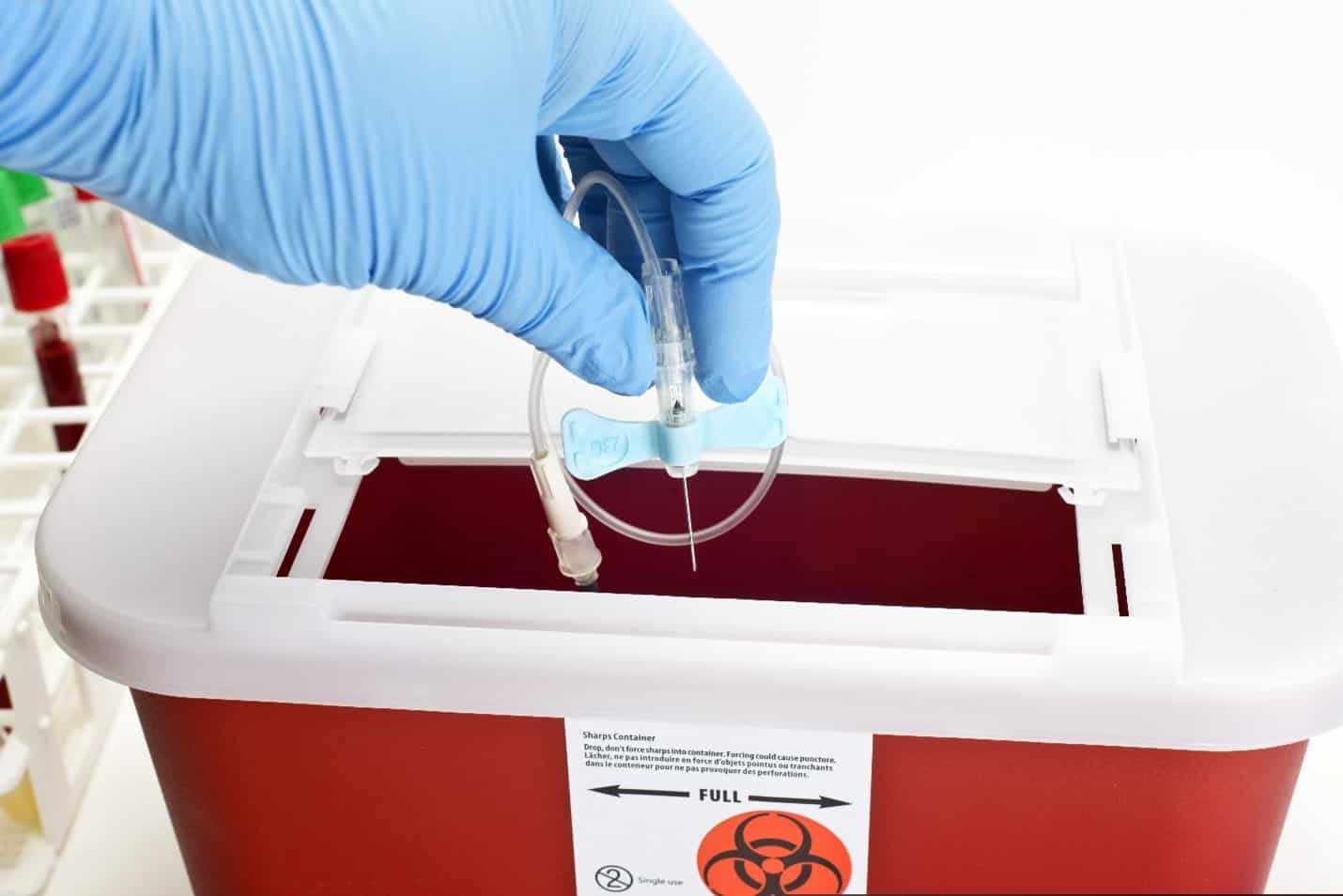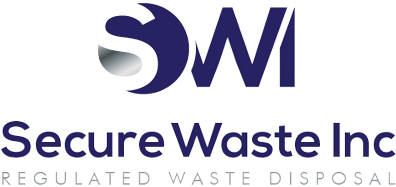Comprehending Biomedical Waste and Its Classifications In 2026: Expert Solutions For Your Biomedical Operating Plan From Secure Waste
Biomedical waste, also known as biohazard or medical waste, includes any solid or liquid waste tainted with blood, bodily fluids, or other infectious materials.
Taking the time to segregate this waste properly is vital! It not only prevents cross-contamination but also helps manage disposal costs and ensures your facility remains in compliance with local and federal regulations. We’re excited to share this comprehensive guide, which will lead you through each essential step in creating an effective and compliant biomedical waste operating plan.
Plus, with the expert advice and support from a trusted waste management partner like Secure Waste, you’ll be well-equipped for success. Let’s tackle this critical task together!

The Significance of an All-Encompassing Biomedical Waste Management Plan.
A biomedical waste operating plan is crucial for ensuring compliance with healthcare waste disposal regulations, which vary by region but generally focus on the safe and effective management of (RMW), also known as regulated medical waste.
This plan outlines specific procedures and protocols for the proper segregation, storage, transportation, and disposal of biomedical waste, thereby ensuring the safety of both healthcare workers and the surrounding community.
Effective biomedical waste management is vital for minimizing risks associated with the improper handling and disposal of medical waste.
These risks include potential public health concerns such as cross-contamination between hazardous and non-hazardous materials, increased infection risks among patients and healthcare providers, and significant environmental damage caused by the leaching of toxic substances into the soil and water supply.
Moreover, a comprehensive operating plan facilitates enhanced operational efficiency within a facility by streamlining waste management processes.
This can lead to cost savings through reduced waste disposal fees and improved compliance monitoring. The plan typically includes staff training protocols, regular audits, and contingency measures for emergencies, ensuring that all personnel are equipped to handle biomedical waste safely and responsibly.
Overall, implementing a detailed biomedical waste operating plan not only protects public health but also promotes sustainability within the healthcare sector.
Advantages of a Biomedical Waste Management Plan
- Regulatory Compliance: Healthcare facilities that generate biomedical waste must diligently adhere to their cradle-to-grave responsibilities, ensuring the safe and proper handling of waste from the moment it is created until its final disposal.
These facilities are subject to rigorous regulations at local, state, and federal levels, including guidelines set by the Environmental Protection Agency (EPA) and the Occupational Safety and Health Administration (OSHA). An effective biomedical waste operating plan not only ensures compliance with these regulations but also helps mitigate the risk of incurring substantial fines that can arise from non-compliance.
- Safety Measures: A comprehensive operating plan details the proper handling and disposal practices for biomedical waste, significantly reducing the risk of injuries, infections, or exposure to biohazardous materials for both healthcare personnel and patients.
This includes training staff on the correct use of personal protective equipment (PPE), implementing proper segregation of waste types (e.g., sharps, infectious, hazardous), and ensuring that waste containers are clearly labeled and maintained in good condition.
Additionally, regular safety audits and employee training sessions can further enhance workplace safety and readiness.
- Environmental Responsibility: By implementing strategies to minimize waste volume—such as adopting reusable equipment where feasible, implementing recycling programs for select materials, and promoting waste reduction initiatives—a well-structured biomedical waste management plan supports sustainable healthcare practices.
This not only decreases the quantity of waste requiring incineration, which can contribute to harmful emissions, but also promotes environmentally responsible behaviors within the healthcare community, ultimately aiding in the protection of local ecosystems and public health.
Failing to implement a robust biomedical waste operating plan poses significant risks to community health and safety. Additionally, non-compliance can lead to legal repercussions, including potential lawsuits and sanctions, as well as damage to a facility’s reputation.
Maintaining proper operations not only safeguards public trust but also reinforces the commitment to ethical healthcare practices and environmental stewardship.

Example of a Biomedical Waste Operating Plan
The following is a sample operating plan for biomedical waste. Healthcare facilities can utilize it as a framework for enhancing safety, meeting regulatory requirements, and optimizing waste management processes.
Step 1: Recognizing and Classifying Waste Streams
- Identify waste categories: Perform a waste audit to determine the various types of biomedical waste generated within the facility, including infectious waste, sharps, pharmaceutical waste, and others. Each waste category has specific handling needs; for instance, sharps waste requires puncture-resistant containers to avoid damage and injury.
- Separate waste: Utilize color-coded containers to ensure the proper separation of waste. Correct segregation minimizes the risk of contamination and reduces disposal costs by preventing the unnecessary classification of non-hazardous waste as hazardous. For further details, please refer to our blog on color coding requirements for biomedical waste.
- Label correctly: Clearly mark containers to guarantee that waste is stored, transported, and treated following regulatory guidelines set by organizations such as the Environmental Protection Agency (EPA), Department of Transportation (DOT), and Occupational Safety and Health Administration (OSHA).
Proper segregation prevents cross-contamination, reduces the volume of waste requiring costly hazardous waste processing, and ensures compliance with regulations.
Step 2: Establishing Effective Containment and Storage Protocols
- Utilize Appropriate Containers: Biomedical waste must be stored in containers that are not only leakproof but also puncture-resistant and tamper-proof. For instance, Daniels Health provides innovative reusable medical waste containers designed explicitly for hands-free disposal.
These containers feature large apertures for easy access, counterbalanced doors for safe handling, and passive overfill protection to minimize the risk of spillage and ensure secure waste management.
- Clear Labeling: It is imperative that all containers are distinctly labeled with the facility’s name, address, and the type of contents they hold. This is crucial not only for off-site transport but also for ensuring compliance with regulatory requirements, aiding in the safe and responsible handling of biomedical materials.
- Secure Storage Areas: Biomedical waste should be housed in a designated storage area that is well-ventilated, secure, and inaccessible to unauthorized individuals. Such areas should be monitored closely. Waste must be removed promptly from these storage zones to prevent potential health hazards and to adhere to established storage time limits, ensuring a safe environment for all.
Step 3: Safe Removal and Transport of Waste
- Licensed Transportation Services: To ensure the safe and compliant disposal of biomedical waste, facilities should partner with licensed waste haulers. These professionals possess specialized training in following rigorous protocols that safeguard both human health and the environment.
The waste must be transported securely to treatment and disposal facilities. Ideally, facilities should have the capability to track the journey of the waste removal vehicle in real-time, providing peace of mind and assurance throughout the transport process.
- Documentation: Maintaining comprehensive waste manifests is crucial for documenting the journey of biomedical waste from the facility to the disposal site.
This meticulous record-keeping not only facilitates transparency but also ensures adherence to both local and federal waste management regulations, fostering trust in the waste management process.
- Ensure Regulatory Compliance: All operations surrounding waste removal and transportation must strictly comply with existing regulations. This compliance is vital not only to avoid potential penalties but also to uphold public safety and protect the community from the risks associated with improper waste management.
Step 4: Monitoring and Continuous Improvement
A comprehensive biomedical waste management plan must incorporate systematic monitoring and rigorous evaluation processes to ensure effective management of this waste.
Regularly assessing your waste management operations is essential for identifying inefficiencies, mitigating potential risks, and ensuring compliance with both institutional standards and regulatory requirements.
Regular Audits: Implementing regular audits of your facility’s biomedical waste management plan is a critical component for maintaining compliance and enhancing operational efficiency.
Audits should encompass a range of aspects of the plan, including waste segregation practices, storage conditions, transportation methods, and disposal procedures.
Specific criteria should be used to assess compliance, such as verifying whether waste is sorted into designated, color-coded bins and whether all storage containers meet safety standards. Additionally, audits can reveal any lapses in waste handling protocols that may compromise the safety of both staff and patients.
By documenting findings and establishing corrective action plans, facilities can proactively address issues before they escalate.
Employee Feedback and Engagement: An often-overlooked yet vital aspect of continuous improvement is soliciting feedback from employees who handle and manage biomedical waste daily.
These frontline workers, including nurses, lab technicians, and janitorial staff, possess unique insights into the challenges and inefficiencies they encounter daily. By creating structured avenues for employees to share their experiences—such as regular feedback sessions or anonymous surveys—healthcare facilities can enhance their waste management systems.
Engaging employees not only helps identify hazards but also fosters an environment where staff feel valued and empowered to contribute to safety initiatives.
Leveraging Technology for Improvement: The advent of healthcare technology has brought innovative tools, such as smart waste management systems, which track waste generation and disposal in real-time. These technologies can provide invaluable data on collection schedules, the volume of waste generated, and the efficiency of disposal methods.
By integrating such technologies into your waste management strategy, facilities can make informed decisions based on accurate insights, ultimately improving waste handling processes and outcomes. Moreover, data analytics can facilitate predictive modeling to anticipate waste generation trends, allowing for proactive management.
Compliance Reviews and Future Readiness: Continuous improvement extends beyond current performance metrics; it requires a proactive approach to regulatory changes and industry standards. Regular compliance reviews should be conducted to evaluate the organization’s alignment with evolving guidelines from regulatory bodies such as the Environmental Protection Agency (EPA) and the Occupational Safety and Health Administration (OSHA).
By staying informed about legislative developments and adapting policies accordingly, healthcare facilities can ensure their biomedical waste management plans are future-ready and aligned with best practices.
Implementing Safety Protocols and Ongoing Employee Training
A robust training program is integral to any effective biomedical waste management plan. Ensuring that employees are thoroughly trained in waste handling, segregation, proper storage, and safety protocols minimizes the risk of contamination and enhances the overall safety of the facility.
Critical Aspects of Biomedical Waste Training:
- Waste Segregation: Staff must be comprehensively trained on how to accurately segregate waste into designated categories using color-coded bins—specifically, sharps, infectious waste, and hazardous waste. Training should include visual aids and hands-on practice to reinforce proper techniques.
- Handling Procedures: Employees should receive detailed instructions on safely handling biohazardous materials. This includes demonstrations on the use of personal protective equipment (PPE) such as gloves, masks, and gowns. Training should emphasize the importance of minimizing exposure risks and adhering to safety protocols during transport and disposal.
- Emergency Response: Staff must be well-prepared to manage spills and other emergencies that may arise involving biomedical waste. Training should cover the steps to take in the event of a spill, including containment measures, reporting procedures, and proper disposal methods.
Ongoing education is vital for sustaining a safe and compliant facility. To ensure that all staff members are knowledgeable about the latest regulations and safety protocols, implement regular training sessions and refresher courses to maintain their expertise and proficiency. Also, could you consider incorporating simulation-based training to enhance employees’ preparedness for real-world scenarios?
Begin Your Journey with All-Inclusive Biomedical Waste Solutions
Secure Waste emphasizes that establishing a biomedical waste operating plan is essential for effective management of healthcare waste.
Secure Waste provides comprehensive solutions, encompassing reusable containers and licensed waste disposal services, ensuring that healthcare facilities meet their specific needs and comply with relevant regulations. By evaluating the particular challenges of each facility, Secure Waste helps create customized plans that enhance compliance, safety, and efficiency.
Our clinically designed containers minimize exposure risks, and our transport services guarantee that waste is managed, transported, and disposed of responsibly. Collaborating with Secure Waste allows facilities to refine their waste management processes, lower expenses, and reduce their environmental impact. Please contact us today to learn how to enhance your biomedical waste management plan with innovative and reliable solutions.
In Conclusion:
Now that you have a more comprehensive understanding of the Biomedical waste plan and disposal, don’t hesitate to contact Secure Waste.
We provide reliable, compliant, and eco-friendly medical waste disposal solutions tailored to your facility’s needs. We have expertise in biomedical, hazardous waste, and Sharps container disposal. Additionally, we offer customized waste management plans, including secure collection and transportation, as well as sustainable disposal practices.
**Disclaimer** This information is provided for reference purposes only and should not be considered as legal advice or factual information at the time of your reading. Regulations frequently change and can vary from state to state. We encourage you to contact your local regulatory authorities or Secure Waste directly for the most current information. Please note that Secure Waste is not liable, in part or in whole, for any information contained on this page or website.
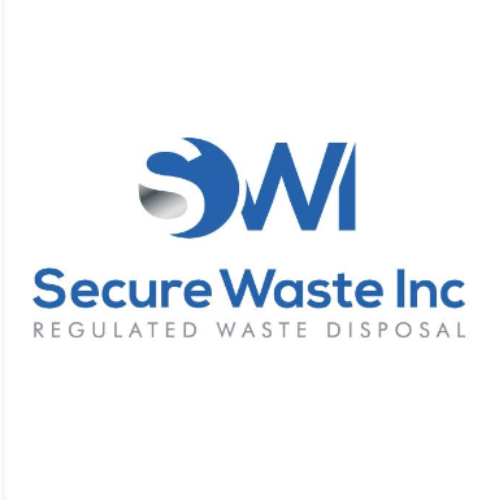
Expert Medical Waste Management: With over 25 years of industry experience, Secure Waste is a trusted local leader in hazardous and biohazardous waste disposal across Maryland, Virginia, and Washington, D.C. Specializing in medical waste management, sharps needle disposal, and biohazard waste removal, the company ensures full compliance with federal, state, and local regulations while prioritizing environmental sustainability.
The company also offers additional services, including secure document shredding and sharps container sales, providing comprehensive solutions for healthcare facilities and businesses. Our cost-effective services help clients maintain regulatory compliance without unexpected costs.
With a commitment to customer satisfaction, Secure Waste offers tailored waste management plans that align with industry best practices. Their team of experts provides reliable, timely, and compliant services, making them the preferred choice for medical waste disposal. For a free waste quote or more information, visit www.securewaste.net
